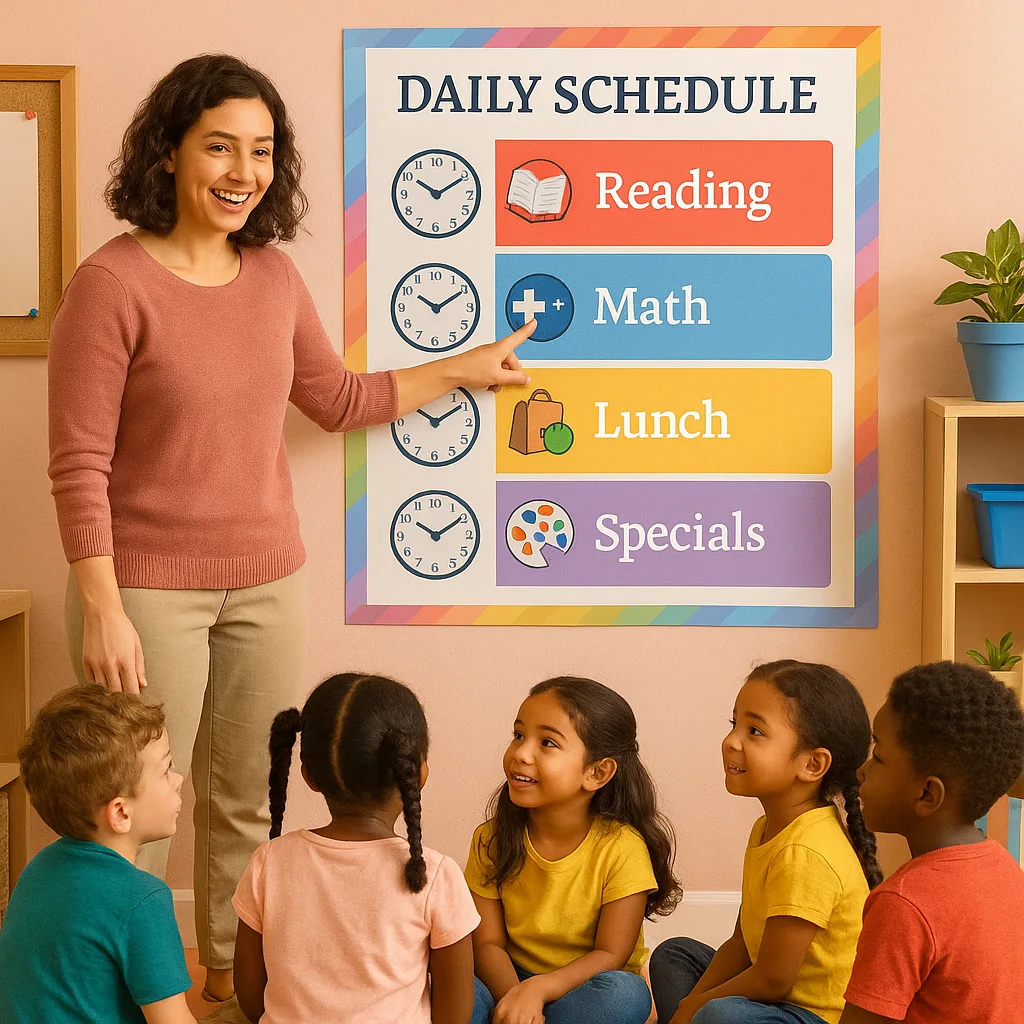School Poster Printer Visual Schedules – Calm Classroom
Why School Poster Printer Visual Schedules Save Teacher Sanity
After eight months of teaching first grade, I’ve learned that six and seven-year-olds don’t experience time the way adults do. To them, “five more minutes” could mean anything from thirty seconds to half an hour. Similarly, “after lunch” is a vague concept that might as well be next Tuesday. This is why visual scheduling has become my classroom lifesaver.
Creating comprehensive visual schedules using our Classroom Pro 24 Poster Maker Advanced Package has transformed my teaching day from constant verbal redirections to smooth, student-led transitions. Furthermore, these colorful, engaging schedules do more than just show what comes next – they teach time concepts, build independence, and reduce anxiety for both students and teachers.
Research backs this up too. Visual schedules have been shown to decrease transition times by up to 50% in elementary classrooms. Additionally, they support diverse learners, including English language learners and students with special needs, by providing clear, consistent visual cues that transcend language barriers.

Transition Timers That Actually Work
If there’s one thing that can derail a perfectly planned day, it’s transitions. Before I started using visual timers, getting my class to move from one activity to another felt like herding cats – very distracted, very energetic cats. Now, with colorful timer posters created on our school’s poster printer, transitions have become smooth and even fun.
My favorite creation is what I call the “Rainbow Countdown.” Using banner printing machines, I designed a series of rainbow arcs, each representing one minute. As time passes, I move a sun icon along the rainbow. When the sun reaches the pot of gold, time’s up! This visual makes abstract time concepts concrete for young learners.
For quick transitions, I created “Speedy Clean-Up Cards” – poster-sized visuals showing exactly what materials should look like when properly stored. Instead of repeating “Put your crayons in the blue bin” twenty times, I simply point to the poster. Students can self-check their cleanup against the visual guide.
Here’s my game-changer tip: I laminated timer strips that stick to our main schedule with Velcro. When we need extra time for an activity (which happens daily), I can quickly add a “5 more minutes” strip without recreating the entire schedule. This flexibility has saved my sanity more times than I can count.
Since implementing visual schedules, my transition times have decreased dramatically!
Students now check the schedule independently instead of asking “What’s next?”
Real Results: How Visual Schedules Transformed My Teaching
Let me paint you a picture of my classroom now versus eight months ago. Remember that chaotic Tuesday morning I described? Last week, during that same transition time, I watched in amazement as my students checked the schedule, cleaned up their reading materials, and moved to their math spots – all while I was helping a student who had been absent. One student even reminded another, “Look, the timer says two more minutes!”
The transformation hasn’t just been in smoother transitions. My students now understand time concepts that previously seemed abstract. They can estimate how long activities take, sequence events logically, and even plan ahead. “Mrs. Nguyen, we have art after lunch, so should I put my painting shirt in my cubby now?” These moments of forward-thinking make my teacher heart sing.
Perhaps most importantly, my stress levels have plummeted. Instead of being a constant traffic director, I can focus on actual teaching. When substitute teachers come in, they’re amazed at how independently the class runs. The visual schedules do the heavy lifting, allowing any adult in the room to facilitate smooth transitions.
Parents have noticed too. At conferences, they share how their children now create visual schedules at home for homework time or weekend activities. One parent even asked for tips on creating morning routine charts after her daughter kept referencing our classroom system. This life skill extends far beyond our classroom walls.

